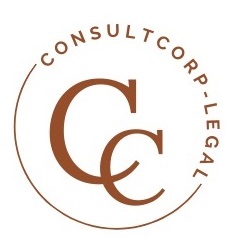Cheque Bounce
Introduction
The digital era has made our life easier and simpler than before. All thanks to the internet and innovation which has brought developments in the Banking sector too. Now transferring money, making payments, etc., are at our fingertips. However, there are many who still prefer the traditional mode of cheques for financial transactions. For a very long time cheques were considered the safest mode and they still are since they can be tracked however there entail risks like ‘dishonour’ or ‘bounce’, fines, penalties, and imprisonment.
Basic terms used during Cheque Payment
- Drawer
The person who has a bank account and draws/writes a cheque is the Drawer also known as the maker.
- Drawee
The Drawer’s bank is the Drawee. The cheque is always drawn for a specific bank.
- Payee
To whom it is payable or the person whose name is mentioned in the cheques for receiving payment is the Payee. In the case of self-cheque, the Drawer himself is the Payee.
What is Cheque Bounce?
We know that a cheque is a negotiable instrument through banking institutions to transfer money. A cheque bounce is usually a term used when the dispensed cheque results into unsuccessful processing. There can be several reasons for a cheque bounce. The most common cause is inadequate or no funds in the account. Hence the cheque issued is returned along with a memo stating the reason for it being bounced.
Reasons for Cheque Bounce
- Irregular Signature
- The wrong figure and amount mentioned
- Damaged Cheque
- Overwriting of the cheque
- The incorrect date mentioned on the given cheque
- Lacks appropriate funds
- Has no minimal to no funds
- Frozen account
- When payment is stopped
What happens when a Cheque Bounces?
In general, the consequences are:
- A penalty by the bank
Both drawer and the payee would have to pay the penalty to their respective banks. The penalty charges vary from bank to bank. Usually, the outward return is around Rs. 300/- (Rupees Three Hundred) and the inward return is around Rs. 100/- (Rupees One Hundred).
- Damages credit history
It lowers down your CIBIL (Credit Information Bureau (India) Limited) score and hampers your credit score. This would lead to one being refused to opt for loans. The banks provided loans based on a good credit score.
- Filing Civil & criminal charges by the payee
In India, a cheque bounce is considered an illegal and criminal offense under The Negotiable Instruments Act, of 1881. Section 138 of this Act deals with the dishonour of a cheque due to insufficiency of funds in the account. The punishment under this is as follows:
- Imprisonment for a term that may be extended to two years, or
- With a fine which may extend to twice the amount of the cheque, or
- With both.
A person can have exemptions of the above if the following are found
- The cheque has been presented to the bank within a period of six months from the date on which it is drawn or within the period of its validity, whichever is earlier;
- The payee or the holder in due course of the cheque, as the case may be, makes a demand for the payment of the said amount of money by giving a notice in writing, to the drawer of the cheque,(within thirty days) of the receipt of information by him from the bank regarding the return of the cheque as unpaid; and
- The drawer of such cheque fails to make the payment of the said amount of money to the payee or, as the case may be, to the holder in due course of the cheque, within fifteen days of the receipt of the said notice.
- Other drawbacks
As per the Reserve Bank of India (RBI), the bank can prevent one from issuing cheques to a person who has been booked for this offense a minimum of four times and the amount on cheques add on to more than Rs. One crore.
Legal remedies against Cheque Bounce
- Resubmission of cheque
If the drawer does not agree to provide another cheque, then the payee can initiate civil proceedings against the drawer to pay the said amount on the cheque.
- Issue a cheque bounce notice
Under Section 138 of the Negotiable Instruments Act when a cheque bounces due to insufficient funds then a cheque bounce notice can be issued.
Jurisdiction for filing cheque bounce suit
The payee can file the complaint before either a 1st class Judicial Magistrate or Metropolitan Magistrate in any of the following places:
- Where the cheque was drawn
- Where the payment was made
- Where the cheque got dishonoured
- Where the cheque was presented for payment
- Where the demand notice was served
Documents required when filing for a suit
- Original cheques copy,
- Cheque return memo,
- Demand notice and
- Postal receipt
Current Scenario
As of now in India, there are more than 33 lakh cheque dishonour criminal cases pending. This has greatly impacted people’s belief in cheque transactions. In the month of April, the Supreme Court of India had asked both the Centre and the State to devise a scheme to drop the prosecution in cheque bouncing case involving a small amount.
The finance minister will soon introduce new rules to curb the cheque bounce case. Some of the suggestions made in high-level meetings were:
- Checking into other accounts of a cheque issuer
- Prohibition of the opening of new accounts of offenders
- Treating cheque bounces default of a loan
After adding the legal perspective these measures will be implemented.
Sources:
https://indiankanoon.org/doc/1823824/
https://moneymint.com/why-cheque-bounced-or-dishonoured/
https://www.quora.com/What-is-the-difference-between-drawer-drawee-and-payee

